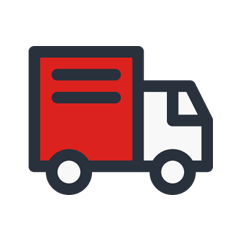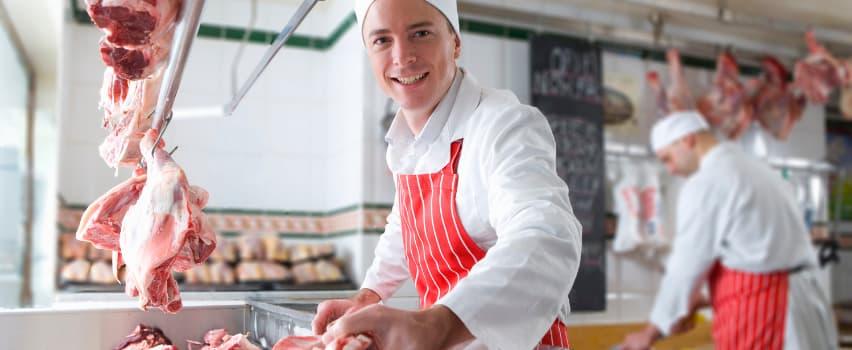The 6 most useful skills for junior butchers to learn
Breaking into the butchery trade means learning more than just how to hold a knife – it’s about control, technique, consistency, and safety. Junior butchers need to develop a solid foundation in key physical skills, especially those tied to knife work and joint preparation. These are the day-in, day-out actions that shape meat properly, prevent waste, and keep production moving smoothly. With decades of experience to our name here at Butchers Equipment Warehouse, we’ve got plenty of knowledge ourselves about what’s involved in getting the best out of equipment like butchers knives, boning knives and knife sharpeners (amongst others!).
So, with all that in mind, here are six essential techniques every junior butcher should be trained in from the start.
Boning
Boning is one of the core skills of butchery and appears in almost every shift. It involves removing bones from meat cleanly, following the bone with precision to avoid unnecessary wastage. The process demands control and confidence with a boning knife, using short, deliberate cuts that trace tightly along the bone. Common examples include boning a lamb shoulder, chicken thigh, or pork leg for roasting or mincing.
This skill also encompasses pin boning, most common in fish preparation but also useful for poultry or small game. It involves locating and removing fine, hair-like bones with either a knife tip or pin bone tweezers. It’s a fiddly process but vital for creating bone-free fillets suitable for stuffing, rolling or high-end service. It teaches finesse, finger sensitivity, and pride in a clean, precise finish – even when dealing with fiddly detail work under time pressure.
Slicing and dicing
Uniformity is everything when slicing or dicing. Whether you’re portioning steaks, cubing meat for pies, or slicing for display trays, consistency is key to both appearance and cooking time. One of the most crucial early skills is learning how to use the appropriate knife – typically a slicing, cimeter, or breaking knife – with long, steady strokes to produce even cuts without tearing the meat fibres.
Slicing involves managing muscle grain and fat layering, while dicing requires consistent cube sizes for even cooking and presentation. Dicing is especially common in prep for kebabs, stews and sausages. Junior and apprentice butchers can also benefit from being trained to handle large volumes without losing accuracy, and how to reset their hand position frequently to maintain control and prevent accidents.
Trimming
Trimming is about shaping a cut for either retail display or restaurant service. It requires attention to detail, a steady hand, and a sharp boning knife. The butcher removes silverskin, flaps of fat, ragged edges, and any bruised or discoloured flesh. The goal is a clean, uniform, professional-looking finish.
Trimming also plays a crucial role in product value – improving both appearance and tenderness while reducing gristle and waste. For example, trimming a beef rump for grilling or preparing lamb neck fillet for braising both demand slightly different approaches. New butchers will therefore need to learn how to balance appearance with yield, avoiding the trap of trimming too aggressively and throwing profit in the bin.
Seaming
Seaming means separating a primal or sub-primal cut into its natural muscle groups by following the connective tissue between them. This is the opposite of hacking – it’s gentle, careful work using the knife tip to expose and pull apart seams, often by hand. For example, breaking down a beef topside into topside, thick flank and silverside, or splitting a pork shoulder into collar, blade, and scotch.
Done properly, seaming produces cleaner, more versatile cuts for either further processing or sale. It’s an essential step in dry-age prep, sausage trimming, and custom-cut butchery for chefs. New and apprentice butchers need to develop the feel for where seams naturally run and how to open them without tearing into the meat. It’s a skill learned through repetition – and by watching experienced hands work closely with the knife’s tip rather than the blade’s edge.
Capping
Capping refers to removing the fat cap from a joint or cut – but not all of it. The butcher decides how much fat to leave on for flavour, moisture, and presentation. This is commonly done on joints like sirloin, brisket, and lamb shoulder.
Good capping leaves a smooth, even layer that protects the meat during cooking and bastes it naturally with rendered fat. Junior butchers must practise slicing just under the surface of the fat, avoiding gouging the meat or cutting unevenly. Capping also improves the cut’s visual appeal on the counter – especially in dry-aged or high-value beef joints where clean white fat and dark muscle contrast beautifully.
Chining
Chining is the process of removing the chine bone – the section of the backbone attached to cuts like pork loin or lamb saddle. This is often done before roasting or cutting chops. It enables easier carving and better portioning.
The process can involve a cleaver, a boning knife, or a bandsaw depending on scale. In hand-prepped joints, the butcher will first expose the bone with a knife, then work it loose and break it away cleanly. Junior butchers need to know how to spot the joint line, how to avoid cracking vertebrae with the wrong tool, and how to keep the surrounding meat clean and unbruised. It’s a skill often passed over in modern retail prep, but still essential in full carcase or traditional butchery settings.
That’s all the essentials covered! And of course, if you or any of your staff (new or otherwise) ever need any of the equipment above – or even just some spare parts – you’re in exactly the right place. Here at Butchers Equipment Warehouse, we offer a wide range of butchery equipment and spare parts to ensure you’re fully prepared for the busy months ahead. Our products are designed to meet the rigorous demands of the industry, providing reliability and efficiency when you need it most.
Here, you can find a wide range of meat mincers, butchers bandsaws, and butchers knives and sharpeners. If you ever need any help or advice in choosing exactly the right equipment for you, you can always give us a call on 01254 427761. We’re here to help!




